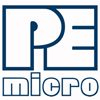Home > On-Demand Archives > Theatre Talks >
Getting Started with FPGA-based Hardware Design
Philip Salmony - Watch Now - EOC 2023 - Duration: 29:11

Delving into the world of FPGA-based hardware and PCB design can be daunting. In comparison to 'simple' microcontroller-based embedded system design, and when incorporating FPGAs and SoCs, the complexity of system, schematic, and PCB design is driven up substantially.
For instance, we need to worry about the finesses of controlled impedance traces, delay tuning, stack-up choice, DDR memory layout, power distribution and decoupling network design, power delivery for multiple voltage rails with high currents - and that's just naming a few examples!
This talk will show you - in a very condensed form - the basics and what you need to pay attention to when attempting your first FPGA-based hardware and PCB design, including real-world, practical examples.
Awesome info
Philip, have you experimented with the Xilinx RFSoC? I've been waiting for the price of development boards to go down (certainly less than $10k) and watching to see if anyone creates an open-source design. I've programmed with the Zynq 7000 but would LOVE to delve into direct conversion radio with the RFSOC. Great presentation... Dave
Thanks,
Hey Dave, Thanks for your comment. I'm afraid I haven't used the RFSoC yet.. The only more advanced AMD/Xilinx chip I'm currently creating a design for is the Zynq UltraScale+ MPSoC. Best, Phil
This was a nice overview for those of us that have not delved into the topic. Lots of good keywords in the presentation for going down the Google rabbit hole!
Thank you, Matthew! Yes, I hope it serves as a starting point for further research into various topics :)
Phil, this was a very engaging and fast paced talk! I've enjoyed it very much. How do you prototype the ZettBrett? Is it all done within the Xilinx ecosystem? There is actually no way to build something (on a breadboard) with all those BGA type ICs. I struggle a lot with all the tools I need to get the job done, years later, I can't even remember what I thought at that time nor stay the tools the same. To even make smaller changes is an endeavour! Thank you for your great talk!
Thank you, Thomas!
Unless you're utilising sensor with fairly 'simple' interfaces (SPI, I2C, ..) and have a devboard with your FPGA/SoC of choice, then prototyping physically will be quite hard. As suggested in the talk, I'd usually start with reference designs and system-on-modules. Build a carrier board with my required peripherals and then hone in to a final product, which puts everything onto a single board (for example).
The ZettBrett however was done without any 'pre-prototype' or SoM. The only tools I used were datasheets, app notes, reference designs, and the Xilinx tools.
Really informative and concise overview of the whole design process. Thank you for all these videos and educational content.
Thank You
Amrith Harijayanthan Namboodiri
Thank you, Amrith!






















